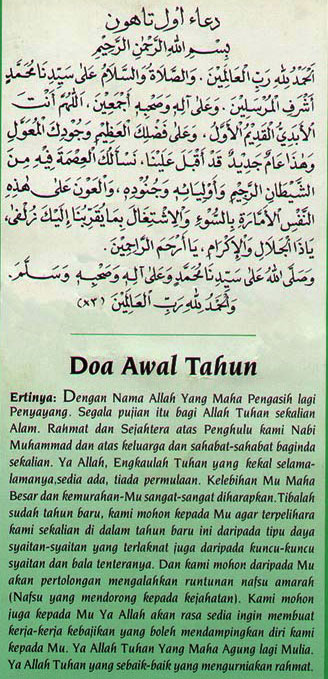"MANY years ago, Tagore said: “To build a nation, first build a school.” He was talking about the need to integrate and socialise the young people who form the citizens of a country. In Malaysia, concern was raised even before World War II, not long after the British had experimented with preserving separatism and found the situation difficult to control. Sir Shenton Thomas (governor and high commissioner), in about 1940, actually thought seriously of adopting a policy to Anglicise the Chinese. But war broke out before he could act.
It is not at all well known that, in the early years of British administration, there was no consciousness of the need to build walls between the ethnic groups. For instance, those appointed to official bodies (such as sanitary boards or state councils) represented industries or commerce. It was only after World War I that the decision was made to appoint ethnic representatives.
The British treated non-Malays as aliens and therefore provided facilities for them to continue to live as citizens of their countries of origin. Hence also, hardened non-Malay criminals were banished, meaning they were sent back to their original countries and could not return.
Malays (as distinct from those of more recent Netherlands East Indies origin) were deemed to be subjects of the Rulers. Those committing serious crimes were exiled, meaning they could return because this was their land of origin. It was to protect their interests, after the first rubber boom of 1910, that the Malay Land Reservation Act was passed in 1913 which also defined, for the first time, who a Malay was. This same definition is preserved in the Federal Constitution.
When plans were laid for the establishment of a nation-state in the course of World War II, the British began to plan seriously the best way to integrate the ethnic groups. The Communities Liaison Committee was formed at the beginning of 1949, chaired by E.E.C.Thuraisingham.
The Barnes Committee, a year later, recommended the integration of the education system. All government schools, as distinct from private schools, would use Malay and English as the main media of instruction but pupils could learn their own ethnic languages. Later, the Razak Report of 1956 stated categorically that “the main objective of Malaya’s educational policy is national unity.” Its recommendations were substantially similar to that of the Barnes Report.
But throughout the late “forties” and “fifties”, various efforts made to integrate the people proved futile. They preferred to remain separate. Hence, ethnic political parties were formed. Socialism and communism tried to use ideology to break down communalism; both failed. I remember a question set for my final year examination (in 1959) by Prof. K.G.Tregonning (an Australian): “Communalism not communism is the real threat in Malaya.” Most of the students who answered that question agreed with the statement.
Singapore is very well aware of that and has adopted, from the beginning, an integrative approach towards education. But its requirement that a pupil must study his/her own ethnic language is too hard. If an Indian pupil wants to study Mandarin instead of Tamil, he/she is not allowed to do so.
Our political leaders also could not solve the problem on the eve of independence. They left many issues unresolved hoping that, after independence, reason and not emotion would prevail. But even now there is no sign of it. When I told the reporter of the Chinese paper that the time had come to adopt a “one-system national school” approach, I specifically mentioned Singapore as an example. But she could not understand what I was saying and reported that I had said non-Malays must forget their mother tongues.
“Mother tongue” is another misunderstood term. It should be the language used by members of a particular family, not the language used by a nation. Therefore, Tamil is not the “mother tongue” of every Indian. The Bengalis, Punjabis, Malayalis and Telegus have their own “mother tongues”. In Sarawak and Sabah, the indigenous people have numerous “mother tongues”.
Like it or not, young Malaysians must make it a point to acquire three languages at least: the national language, an international language (English is the most useful) and each person’s own ethnic language. The schools can provide for the learning of a few of the major ethnic languages: Mandarin, Tamil and Arabic; but it would not be practicable to try to provide more.
When discussing national problems, why must leaders of the nation allow themselves to be overcome by strong ethnic feelings? Their main responsibility is to integrate the nation not separate it. And, by the way, the nation rejected assimilation a long time ago but acknowledged that integration is the right approach. There are still educated Malaysians who do not know this.
I have lived through two serious ethnic riots – one in 1945 and one in 1969. When I plead for a rational approach why should I be accused of not knowing my own people? My research into the history of the Chinese in Malaysia takes into account minute details. But the simple question is, if I choose to be an ethnic champion would I be able to contribute to national unity? Am I to understand that confrontation is the wiser approach? Have we not seen the calamities that have taken place in some countries even in recent times because of ethnic confrontation?
The preservation and practice of ancestral culture is not wrong but when one lives in a complex society, social relations cannot be taken for granted. Certainly accommodation is more likely to lead to greater happiness than stubborn confrontation." Around December 2008.
Go HERE to sign the petition for a Satu Sekolah Untuk Semua, lets help our blessed country towards a peaceful and great future for our young ones. 














